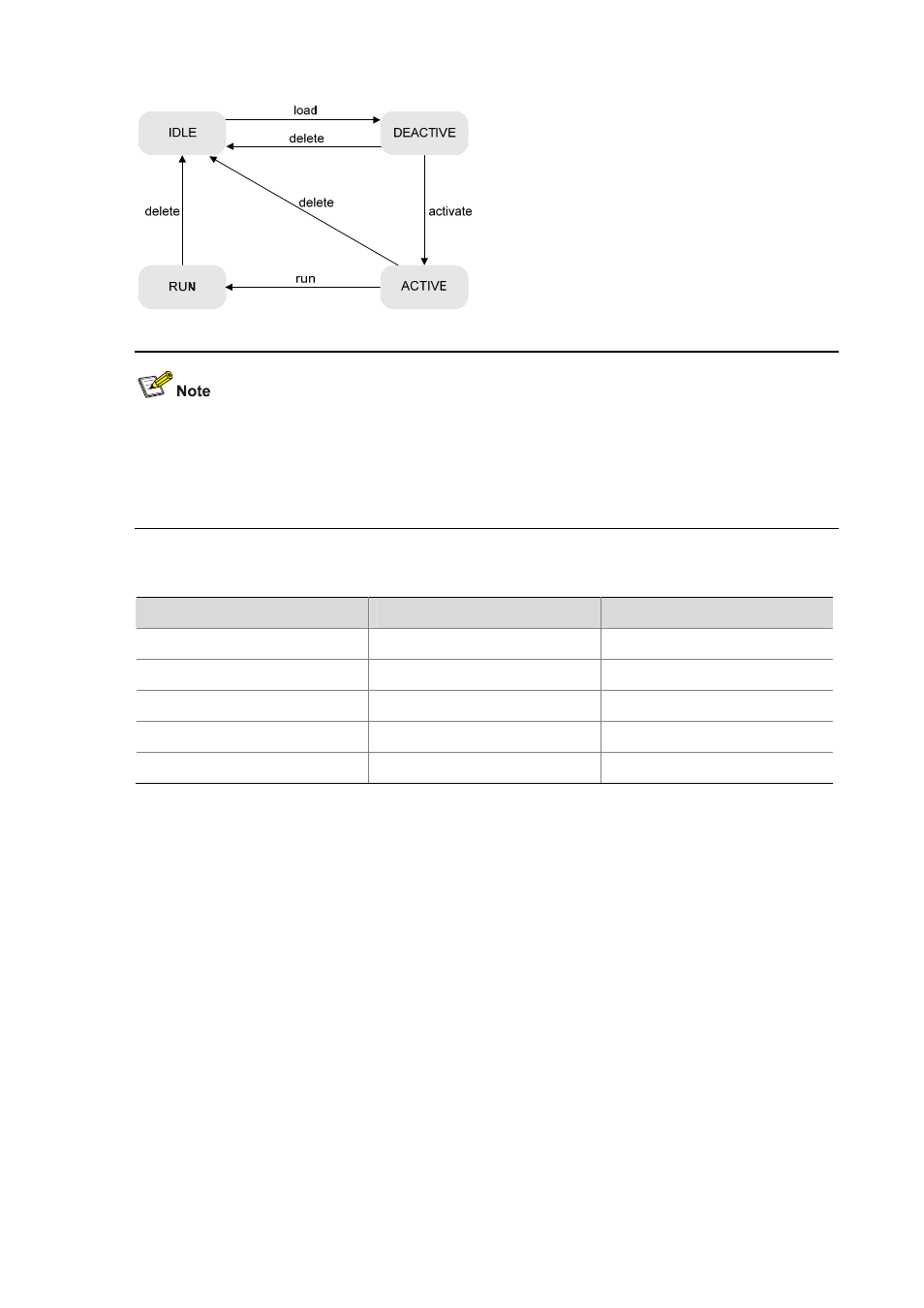H3C Technologies H3C S3600 Series Switches User Manual
Page 1020

4-5
Figure 4-1 Relationship between patch state transition and commands
To dynamically upgrade a fabric constituted by several switches, you can activate, run, and delete the
patches on the fabric, which can be regarded as an independent device, instead of performing
upgrades on each device. However, for each unit device, patch files need to be uploaded separately
through FTP or TFTP to the flash memory and loaded into the memory with the patch load command.
Follow these steps to perform hot patch configuration:
To do…
Use the command…
Remarks
Enter system view
system-view
—
Load a patch file
patch load filename
Required
Activate patches
patch activate
Required
Run patches
patch run
Optional
Delete patches
patch delete
Optional
Note the following:
2) Make sure that you set the file transfer mode to binary before you upload a patch file through FTP
or TFTP to the flash memory of the device; otherwise, patch file loading will fail.
3) Before loading a patch file, verify that the baseline version number of the patch file and the current
software version number are consistent, and the extension name of a patch file must be .pat by
using the display version command. For the baseline version number of the patch file, see the
patch file name. Patch files are named in the format of [product name]-[baseline version
number]-[patch version number].pat.
4) The
patch delete command deletes all the patches in the device. To prevent the solved system
errors from occurring again, you need to reload and activate the related patches.
5) Patch state information is stored in a file named patchstate in the flash memory. You are not
encouraged to perform any operation on this file.
